Jwalamukhi Temple Shaktinagar
Jwalamukhi Temple Shaktinagar Shaktipeeth is a Hindu temple dedicated to Goddess Jwala Ji. Jota Wali Temple is another name for this temple. According to mythology, Mata Sati’s tongue dropped at this location. The temple is situated in the district of Sonbhadra, Uttar Pradesh, India.
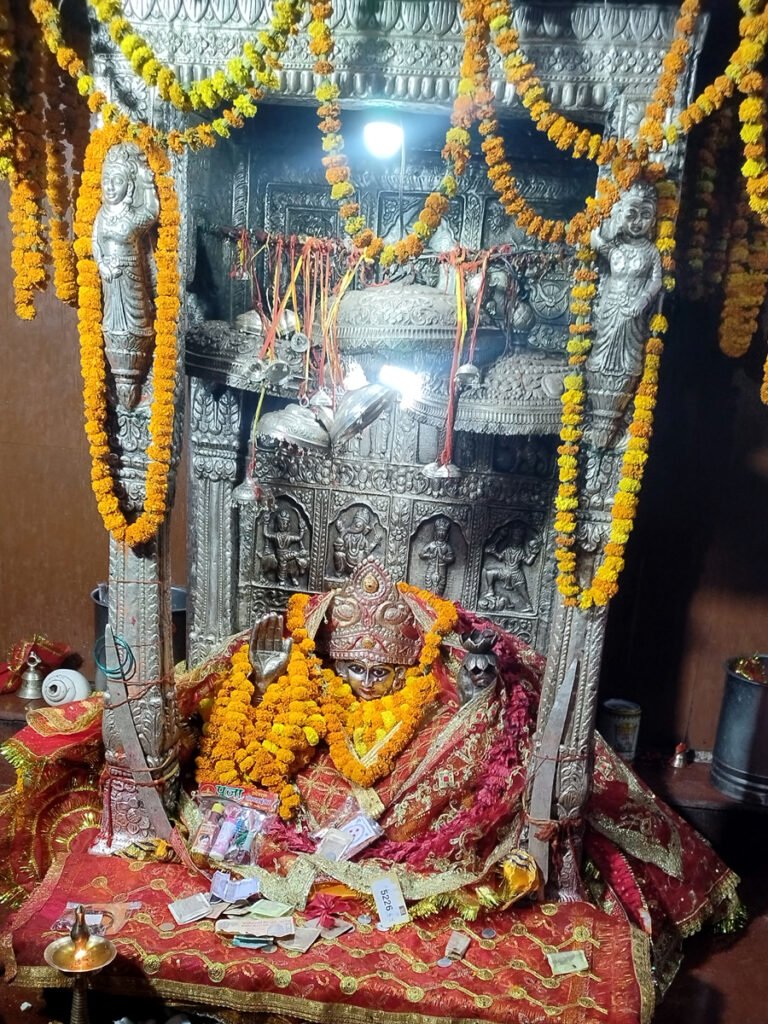
The temple is one of the 51 Shakti Peethas or the place where Sati Devi’s ringlets of hair fell when her father, King Daksha Prajapati, decapitated her. Sati Devi was Lord Shiva’s wife, and her death caused him enormous anguish.
Shiva arrived at the location where the Jwalamukhi Temple Shaktinagar is presently located on one day. He started a fire on a mountaintop, and it has been blazing ever since. The temple was built around the flame, and it has since become a Hindu pilgrimage site. It is extremely popular during the month of Chaitra (March-April), when thousands of lamps illuminate the temple.
In Jwalamukhi temple, nine flames burn without oil or wick, representing the nine forms of Mother. Maa Annapurna, Vidhyavasini, Chandi Devi, Mahalakshmi, Hinglaj Mata, Devi Maa Saraswati, Ambika Devi, and Anji Devi are the other eight fires flickering in the temple.
Contents
- 1 Places to visit near Jwalamukhi Temple Shaktinagar:
- 2 FAQ:
- 2.0.1 What is the significance of the Jwalamukhi Temple in Shaktinagar?
- 2.0.2 What is the history of the Jwalamukhi Temple in Shaktinagar?
- 2.0.3 How can I get to the Jwalamukhi Temple in Shaktinagar?
- 2.0.4 What are the opening hours of the Jwalamukhi Temple in Shaktinagar?
- 2.0.5 What are the dress code and other rules for visiting the Jwalamukhi Temple in Shaktinagar?
- 2.0.6 What are some of the things to see and do near the Jwalamukhi Temple in Shaktinagar?
- 2.0.7 What are the nine eternal flames at the Jwalamukhi Temple?
- 2.0.8 What are the offerings that can be made at the Jwalamukhi Temple?
- 2.0.9 What are the festivals celebrated at the Jwalamukhi Temple?
- 3 How to reach Jwalamukhi Temple, Shaktinagar:
- 4 Google Maps:
Miracles of Jwalamukhi Temple Shaktinagar:
This temple’s wonder is that there is no idol here; instead, nine flames radiating from the earth’s womb are worshipped. Nobody has been able to figure out how this flame is escaping from here until now. Even after drilling for several kilometers, several geologists were unable to determine the source of this natural gas. Furthermore, no one has been able to extinguish this light to date.
When Emperor Akbar learned of the temple’s flames, he summoned his army and attempted to extinguish it multiple times, but no one was successful. He then attempted, but failed, to have the canal excavated. The canal may be seen on the temple’s left side. Later, seeing the mother’s miracle, he bent down and went to gift a gold umbrella of one and a half minds, but the mother refused, and the umbrella fell down and converted into some other metal. Nobody knows what metal it is to this day.
During the British Empire, several efforts were made to discover the energy buried beneath the ground in order to learn about the temple’s flame, but nothing was discovered. Tantra Sadhana is still practiced in these temples, and people practice witchcraft.
Even after independence, several geologists built tents and sat down to investigate the source of the fire, but they, too, received no answers. These facts demonstrate that this is a remarkable flame. Even today, the mystery of the flame flowing from the temple continues.
Read More >> Kashi Vishalakshi Temple Varanasi
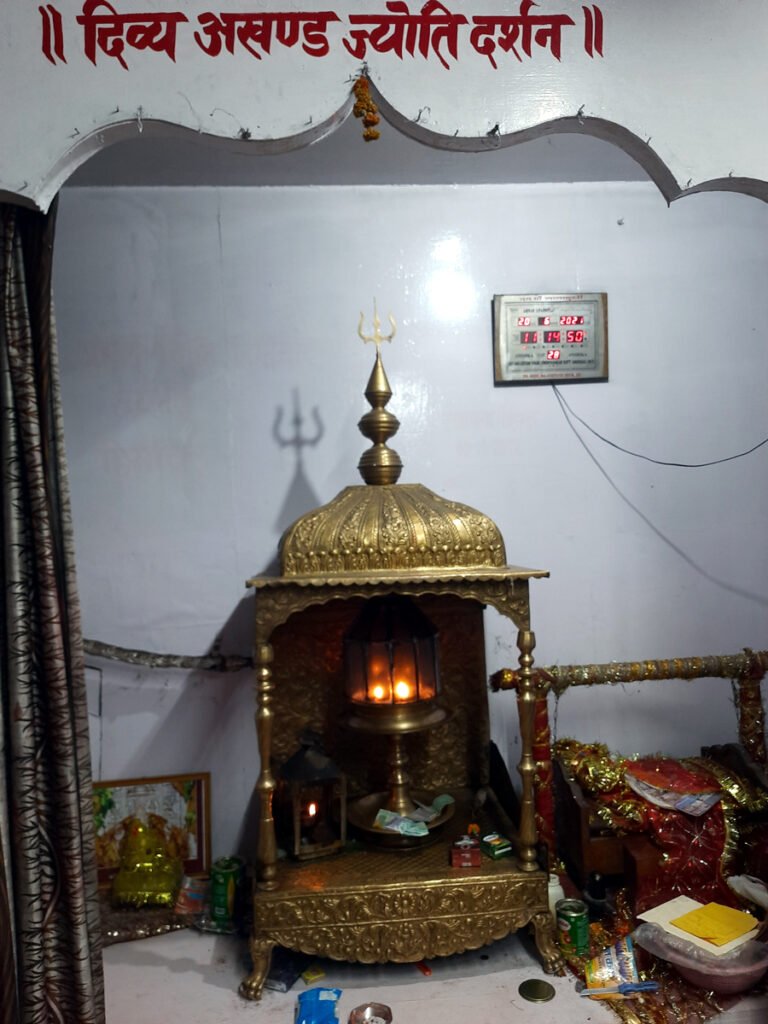
Legendary Story of Jwalamukhi Temple in Shaktinagar:
Jwalamukhi Jwala is also the subject of a legend. Bhakta Gorakhnath, according to mythology, was a renowned devotee of Maa Jwalamukhi Devi who was always absorbed in devotion. When Gorakhnath became hungry, he informed his mother, “Mother, keep the water warm, and I will come after asking for Meeksha.” Gorakhnath did not return from taking the miksha. It is thought that this is the same flame that the mother started, and steam appears to emerge from the water of the kund created at a distance. This kund is also known as Gorakhnath’s box. It is thought that Gorakhnath will return to the temple at the conclusion of Kalyug, and that the flame will continue to burn till then.
The temple is claimed to have been built in the 17th century by Raja Udit Narayan Singh of Gaharwal village. It’s a three-story temple with a golden dome on top. The main shrine of the temple contains a Jyotirlinga, or self-perpetuating flame. For Hindus from all over India, the temple is a major pilgrimage destination.
Explore more >> Bakreshwar Temple | Mahishmardini Shaktipeeth West Bengal.
Places to visit near Jwalamukhi Temple Shaktinagar:
Renusaagar Dam: This is a large hydroelectric dam located about 20 kilometers from Shaktinagar. The dam is a popular tourist destination for its scenic beauty and for the opportunities it provides for fishing, boating, and picnicking.
Sonbhadra National Park: This is a wildlife sanctuary located about 60 kilometers from Shaktinagar. The park is home to a variety of animals, including elephants, tigers, leopards, and deer. There are also several hiking trails in the park.
Vindhyachal Temples: This is a group of Hindu temples located about 100 kilometers from Shaktinagar. The temples are dedicated to various Hindu deities, including Vishnu, Shiva, and Durga.
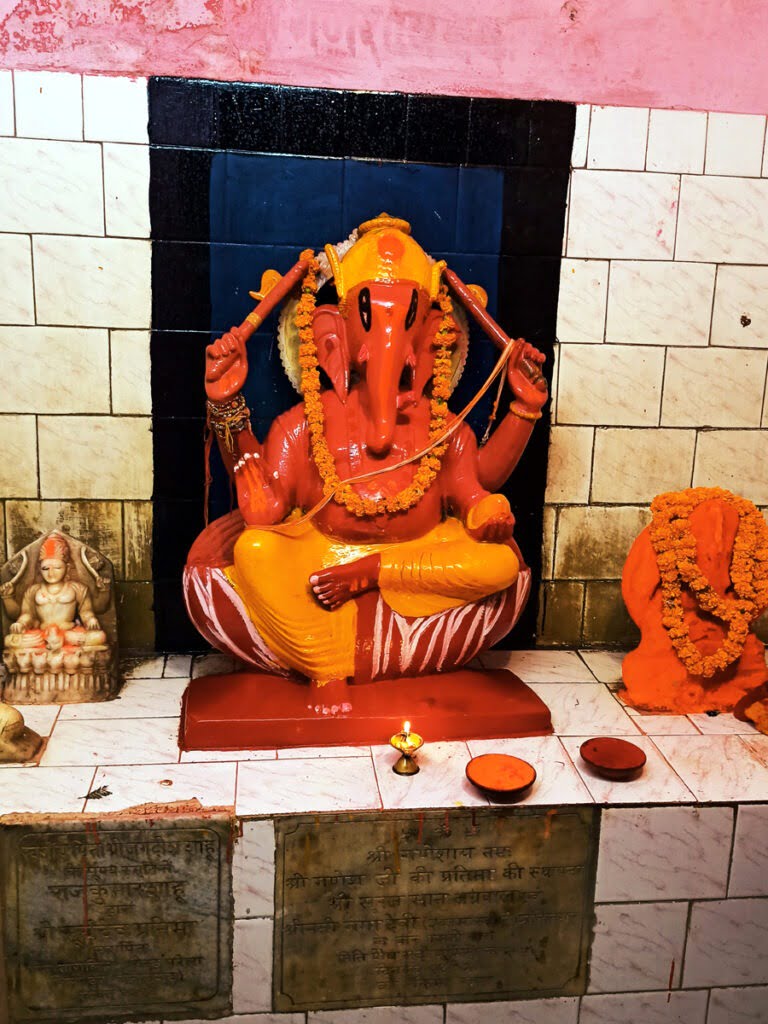
Jwalamukhi Temple Timing:
The temple is open from 6 am to 12 pm and from 3 pm to 9 pm. There is a small fee to enter the temple.
Here are some of the things you can do at the Jwalamukhi Temple:
- At the main shrine, one can worship Goddess Jwala Ji.
- Explore the temple complex’s additional shrines.
- Dip your toes in the sacred tank.
- Take in the stunning environment surrounding the temple.
- Learn about the temple’s history and mythology.
If you are planning to visit the Jwalamukhi Temple, here are some tips:
- Wear comfy shoes because you will be walking a lot.
- Carry a bottle of water with you because the temple complex might get heated.
- Respect the other pilgrims as well as the temple staff.
- Remember to bring your camera to capture the amazing moments at the temple.
Read More >> Nandikeshwari Temple | Nandipur Shakti Peeth, Sainthia
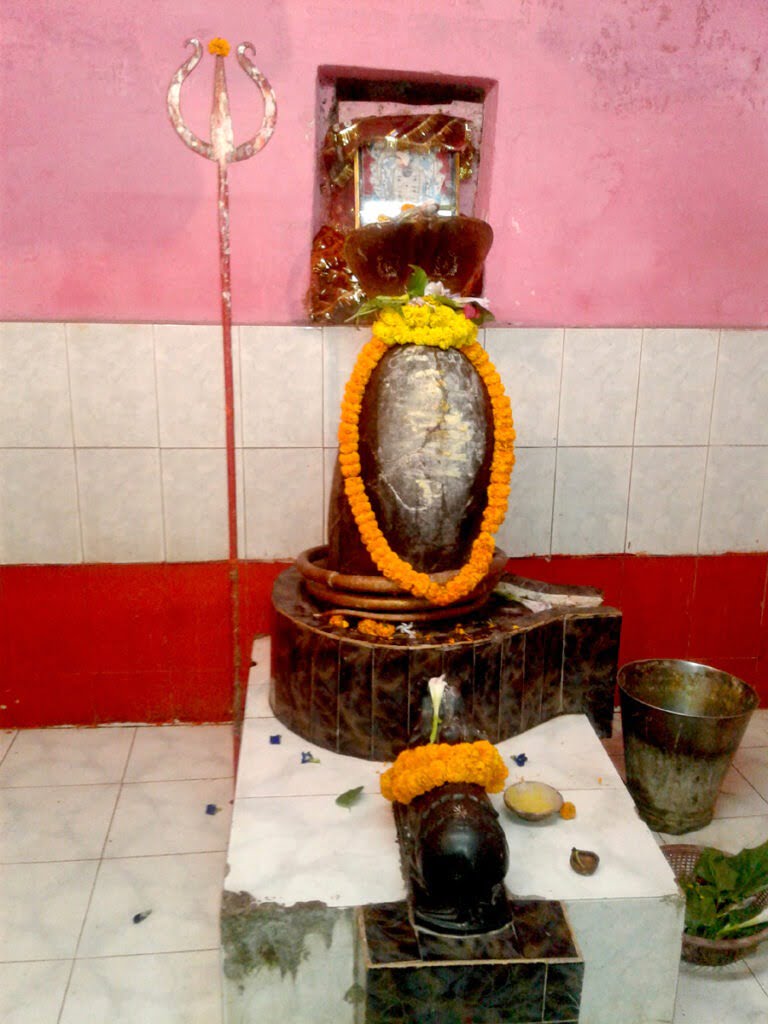
FAQ:
What is the significance of the Jwalamukhi Temple in Shaktinagar?
The Jwalamukhi Temple in Shaktinagar is one of the most important Hindu temples in Uttar Pradesh. It is dedicated to the goddess Jwalamukhi, who is a manifestation of the Hindu goddess Shakti. The temple is located on a hilltop overlooking the town of Shaktinagar.
The temple is significant for several reasons. First, it is believed to be one of the 51 Shakti Peethas, which are sacred sites associated with the goddess Shakti. Second, the temple is home to nine eternal flames, which are believed to be manifestations of the Navadurgas, the nine forms of the goddess Shakti. Third, the temple is a popular pilgrimage destination for Hindus from all over India.
What is the history of the Jwalamukhi Temple in Shaktinagar?
The exact history of the Jwalamukhi Temple in Shaktinagar is unknown. However, it is believed to have been built in the 10th century by the Katyuri kings. The temple was later destroyed by the Mughals in the 17th century. It was rebuilt in the 18th century by the Marathas.
How can I get to the Jwalamukhi Temple in Shaktinagar?
The Jwalamukhi Temple is located in the town of Shaktinagar, which is about 120 kilometers from the city of Varanasi. The temple is easily accessible by road. There are also regular bus and train services from Varanasi to Shaktinagar.
What are the opening hours of the Jwalamukhi Temple in Shaktinagar?
The Jwalamukhi Temple is open daily from 6:00 AM to 12:00 PM and 4:00 PM to 9:00 PM.
What are the dress code and other rules for visiting the Jwalamukhi Temple in Shaktinagar?
Devotees are expected to dress modestly when visiting the Jwalamukhi Temple. Men should wear full-length pants and shirts, and women should wear long skirts or dresses that cover their knees.
Devotees are also expected to remove their shoes before entering the temple. Smoking and photography are prohibited inside the temple.
What are some of the things to see and do near the Jwalamukhi Temple in Shaktinagar?
In addition to the Jwalamukhi Temple, there are several other places to see and do near Shaktinagar. These include:
- The Renusagar Dam, which is a large hydroelectric dam located about 20 kilometers from Shaktinagar.
- The Sonbhadra National Park, which is a wildlife sanctuary located about 60 kilometers from Shaktinagar.
- The Vindhyachal Temples, which are a group of Hindu temples located about 100 kilometers from Shaktinagar.
What are the nine eternal flames at the Jwalamukhi Temple?
The nine eternal flames at the Jwalamukhi Temple are believed to be manifestations of the Navadurgas, the nine forms of the goddess Shakti. The flames are located in the sanctum sanctorum of the temple.
What are the offerings that can be made at the Jwalamukhi Temple?
Common offerings at the Jwalamukhi Temple include coconuts, flowers, and incense.
What are the festivals celebrated at the Jwalamukhi Temple?
The Jwalamukhi Temple is a popular pilgrimage destination during all major Hindu festivals. The most important festivals celebrated at the temple include:
- Navaratri, a nine-day festival dedicated to the goddess Shakti
- Diwali, the festival of lights
- Holi, the festival of colors
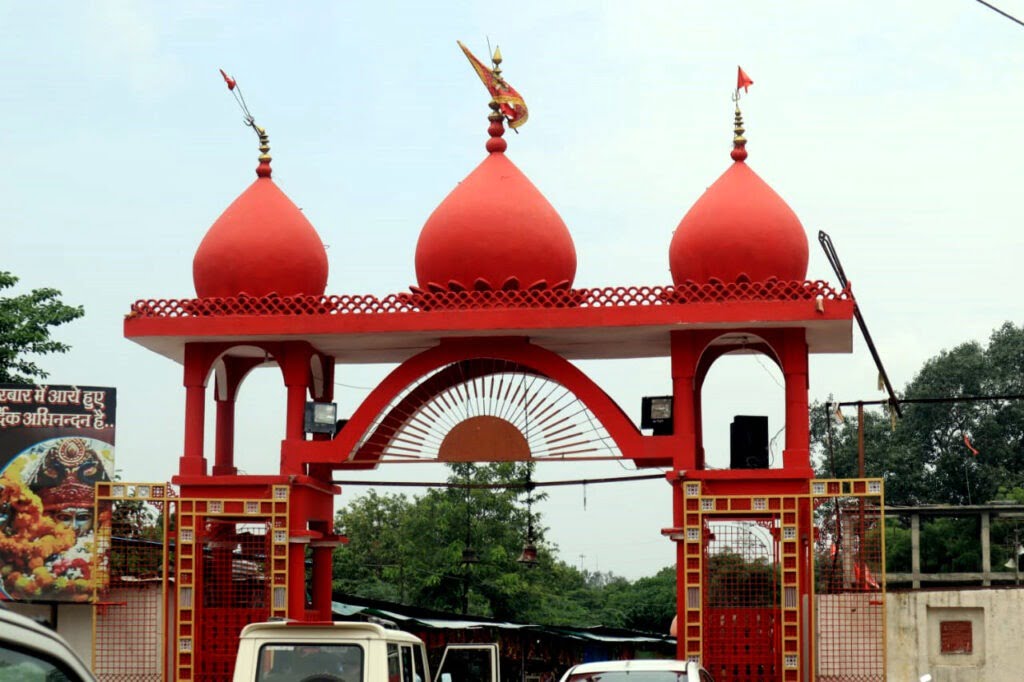
How to reach Jwalamukhi Temple, Shaktinagar:
By Road:
The best way to reach the Jwalamukhi Temple by road is to take the Varanasi-Shaktinagar highway. The highway is well-maintained and the journey takes about two hours.
If you are driving yourself, you can follow the directions below:
- Take the Varanasi-Shaktinagar highway from Varanasi.
- Continue on the highway for about 120 kilometers.
- The Jwalamukhi Temple will be on your left.
By Bus:
There are regular bus services from Varanasi to Shaktinagar. The buses take about two hours to reach their destination.
The bus stand in Varanasi is located near the Varanasi Junction railway station. You can take a bus from the bus stand to Shaktinagar.
By Train:
There are also regular train services from Varanasi to Shaktinagar. The trains take about three hours to reach their destination.
The Varanasi Junction railway station is located in the heart of Varanasi. You can take a train from the Varanasi Junction railway station to Shaktinagar.
